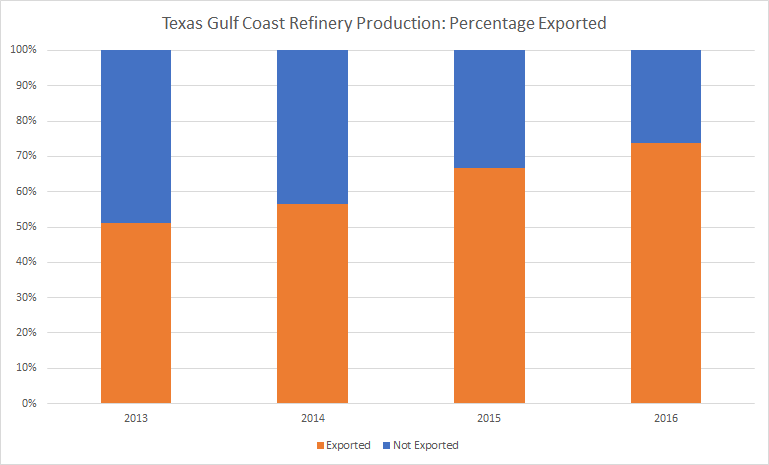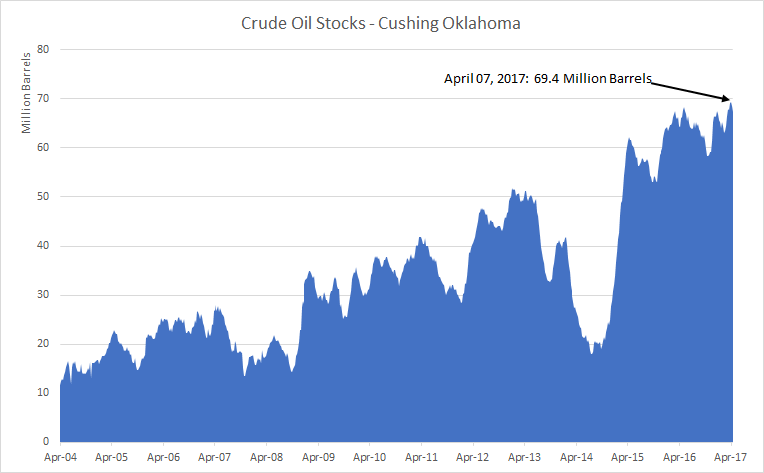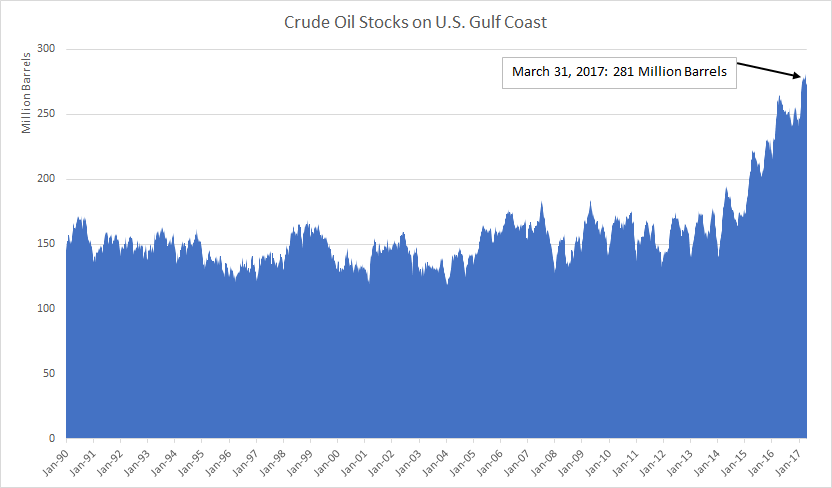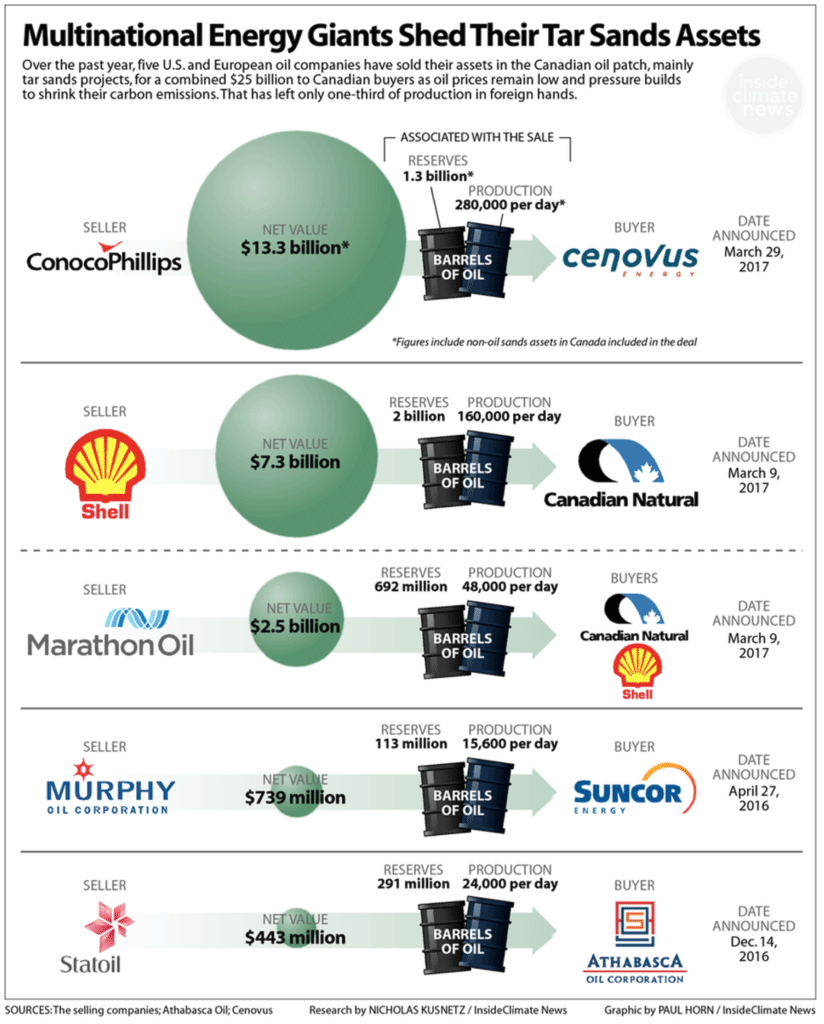
Awash in Oil, Keystone Refineries on Export Overdrive
With refinery exports booming, the Gulf Coast awash in oil and oil companies ditching the tar sands, the energy security case for Keystone XL is more spurious than ever.
Pipeline has no relevance to changing U.S. energy needs
As the debate over whether the Keystone XL zombie pipeline should be built shifts squarely to the state of Nebraska, with a public hearing set for this Wednesday, it is worth looking at how some of the issues surrounding the pipeline have developed since the project was last contested in the court of public opinion.
TransCanada is still parroting the same old lines claiming the pipeline, “is a critical infrastructure project for the economic strength and energy security of the United States.” For that claim to stand up you would think that the pipeline would fill some crucial niche in the U.S. energy system.
But the only niche the project fills is fueling the export of refined petroleum products and exacerbating a glut of oil in Oklahoma and Texas.
And with international oil companies selling out of the tar sands in Alberta like rats leaving a sinking ship, an additional pipeline to the most expensive to produce oil in the world is the worst energy security plan conceivable.
First let’s look at the export issue. Since 2011, Oil Change International has documented the fact that the refineries in the Port Arthur and Houston area that would be the primary customers of Keystone XL are increasingly focused on the export of their products. (See our data and reports here, here, here and here.)
Today we can report that the trend has continued and exports from these refineries have reached new heights in 2016, accounting for 74% of production, up from 51% in 2013.
Source: U.S. Energy Information Administration
In 2016, finished gasoline exports accounted for 87% of the finished gasoline produced in the region’s refineries. Including all gasoline additives and ethanol refined and blended in the region, exports account for 64% of gasoline related products. Diesel exports account for 46% of the diesel produced in the region’s refineries. It is abundantly clear that these refineries have aggressively switched their focus from serving U.S. energy demand to serving international markets. Given that the refineries operate in a Foreign Trade Zone, this is a strategy that enhances their profits while paying little if anything in taxes.
Priming the Glut
That most of the products will be exported is not the only aspect of this misguided project that undermines the national security claims. Another is the fact that the pipeline will only exacerbate a glut of crude oil in Oklahoma and Texas, confirming that the pipeline is simply unnecessary.
Last month, we documented the rising glut of oil in the world’s largest oil storage hub, Cushing, Oklahoma, and pointed out that a key cause is the surplus of incoming pipeline capacity to outgoing. Analysts at Genscape calculate there is already 850,000 barrels per day (bpd) more incoming pipeline capacity than there is outgoing. In the first two months of 2017 the incoming pipelines were utilized at only 51% of capacity compared to 67% for outgoing, which was keeping storage levels relatively balanced albeit at historical highs. Keystone XL would add 830,000 bpd almost doubling the excess incoming pipeline capacity.
Since we published that blog, storage levels both at Cushing and on the Gulf Coast have hit all-time records. As the charts below show, oil in storage has been building since 2015 and has never been so high. At the beginning of April, Cushing and Gulf Coast crude oil storage combined was in excess of 350 million barrels.
Source: U.S. Energy Information Administration
Source: U.S. Energy Information Administration
Tell me again how this project is a critical piece of infrastructure desperately needed by an under-served market.
Finally, we need to set the record straight on this idea that building another pipeline to the tar sands is somehow enhancing America’s energy security and helping reach the much vaunted and little understood concept of energy independence.
Apart from the devastating pollution and climate disruption that tar sands production causes, tar sands oil is the most expensive, capital intensive and risky energy source just about anywhere on the planet. This is why no new projects have been sanctioned since the oil price crash of 2014.
But don’t take our word for it. Ask the international oil companies that have been jumping the tar sands ship in the past few months. If companies like Royal Dutch Shell and Conoco can’t make a buck in the tar sands, it’s hard to see how it can be relied upon as a secure source of energy supply.
As the Inside Climate News infographic below illustrates, in the past year five international oil companies have sold out of the tar sands, ditching some 4.5 billion barrels of reserves and over half a million bpd of production.
Source: Inside Climate News
But the exodus is not over yet. Chevron and BP are both said to be considering sales but face difficulties as the pool of capital still interested in soaking up the tar sands folly dwindles.
The vulnerability of expensive tar sands production to the vagaries of the global oil market make it laughable that anyone would depend on the tar sands for a secure energy supply. The winds of change have been blowing around the oil world for several years, with burgeoning supply running up against tepid demand growth. The future looks even less stable as electric vehicles and changing attitudes to mobility threaten to eat into oil’s share of the transportation market.
The fact is that as we move forward, security will come from greater gains in efficiency, the switch to electricity for transport and the opportunities to generate that electricity from clean renewable energy, built and produced close to where it is used.
Keystone XL was conceived in the first decade of the 21st Century when alternatives to oil appeared remote and expensive. Even then it was bad idea as it was clear that change was needed. As we approach the third decade of this century, we know that we must and can reduce the use of fossil fuels rapidly. The pipeline should be consigned to the history books as the emblem of a misguided past that it is. It has no role to play in America’s energy future.
If you can get to York, Nebraska next week, sign up to tell the Nebraska PSC what you think about Keystone XL.





